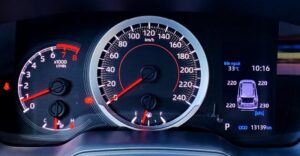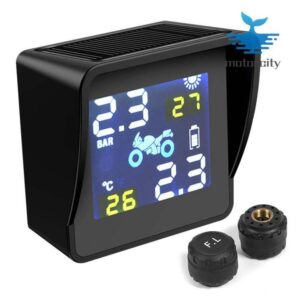Blog
The Most Common Mistakes When Using TPMS
The Most Common Mistakes When Using TPMS
Tire Pressure Monitoring Systems (TPMS) are designed to keep drivers informed about their tire health, providing critical information that helps improve vehicle safety, fuel efficiency, and tire longevity. However, like any technology, TPMS is only effective when used properly. Unfortunately, many drivers make common mistakes that can undermine the benefits of this system. In this article, we’ll explore the most frequent errors made when using TPMS and provide helpful tips on how to avoid them.
1. Ignoring the TPMS Warning Light
One of the most common mistakes drivers make is ignoring the TPMS warning light. This light illuminates when the system detects that one or more of your tires are underinflated, or in some cases, overinflated. While some drivers might dismiss the warning as a minor issue, ignoring it can lead to serious consequences.
Consequences of Ignoring the Warning Light:
- Increased Risk of Tire Blowouts: Underinflated tires are more prone to overheating, which can increase the likelihood of a blowout.
- Decreased Fuel Efficiency: Tires that are not properly inflated create more drag on the vehicle, reducing fuel efficiency.
- Premature Tire Wear: Constantly driving on underinflated or overinflated tires leads to uneven wear, shortening the lifespan of your tires.
- Compromised Safety: Incorrect tire pressure impacts the overall handling of the vehicle, especially in emergencies.
What to Do:
When the TPMS light turns on, immediately check your tire pressure and ensure that it matches the manufacturer’s recommended levels. If the light remains on after you’ve inflated the tires to the correct pressure, it may indicate a malfunctioning sensor or another issue that requires professional attention.
2. Not Checking Tire Pressure Regularly
While TPMS alerts you when tire pressure is low, it doesn’t necessarily mean that your tires are always perfectly inflated. TPMS systems often only notify drivers when the pressure falls below a certain threshold, typically around 25% below the recommended level. However, it’s important to regularly check your tire pressure to ensure optimal performance.
Consequences of Not Checking Regularly:
- Gradual Pressure Loss: Sometimes, tire pressure may drop slowly over time due to natural causes like temperature changes or slow punctures, which may not immediately trigger the TPMS warning light.
- Missed Maintenance Opportunities: Regular pressure checks can help detect issues early, allowing you to address them before they cause damage to your tires or vehicle.
What to Do:
Make it a habit to check your tire pressure at least once a month, using a reliable tire pressure gauge. Always check tire pressure when the tires are cold, as pressure readings can be affected by heat generated from driving.
3. Not Replacing Faulty TPMS Sensors
TPMS sensors are designed to last for many years, but like any part of your vehicle, they can wear out or malfunction. If the TPMS warning light stays on even after you’ve properly inflated your tires, it may be an indication of a faulty sensor.
Consequences of Not Replacing Faulty Sensors:
- Unreliable Alerts: A malfunctioning TPMS sensor can provide false readings, leading to inaccurate tire pressure information, which compromises safety.
- Inability to Detect Pressure Issues: If your sensor is broken, it may fail to alert you about low or high tire pressure, which could lead to unsafe driving conditions.
What to Do:
If your TPMS light remains on even after checking your tire pressure, take your vehicle to a mechanic or tire professional. They can diagnose and replace faulty sensors. Be aware that some sensors may need to be replaced when you install new tires, as they can wear out over time.
4. Overlooking TPMS Relearn Procedures
After installing new TPMS sensors or changing tires, your vehicle’s system may require a relearn procedure to recognize the new sensors. Many drivers fail to follow this important step, which can result in the TPMS not functioning correctly.
Consequences of Overlooking the Relearn Procedure:
- Unrecognized Sensors: If the sensors are not properly relearned by the system, the TPMS light may stay on, or the system might not detect the sensors at all.
- Inaccurate Monitoring: Without proper relearning, the system may not correctly monitor tire pressure, rendering it ineffective.
What to Do:
Always follow the manufacturer’s instructions for the relearn procedure after replacing sensors or tires. Depending on the vehicle, this may involve using a TPMS scan tool or following a manual procedure to reset the system.
5. Incorrectly Using Aftermarket TPMS Systems
Many drivers choose to install aftermarket TPMS systems, especially for vehicles that were manufactured before the feature became mandatory. While these systems can be highly effective, improper installation or usage can lead to malfunctioning or inaccurate readings.
Consequences of Improper Use:
- Inaccurate Pressure Readings: Aftermarket TPMS systems may not be properly calibrated to your vehicle’s specifications, leading to false alerts or missed tire issues.
- Compatibility Issues: Not all aftermarket systems are compatible with every vehicle. Choosing the wrong system can result in poor performance or failure to function altogether.
What to Do:
Before purchasing and installing an aftermarket TPMS system, ensure that it’s compatible with your vehicle. It’s also a good idea to have the system professionally installed and calibrated for accurate results.

6. Failing to Reset the TPMS After Tire Rotation
Tire rotations are a regular part of tire maintenance that helps ensure even wear across all tires. However, after rotating your tires, you may need to reset your TPMS to ensure it properly registers the new positions of each tire. If you don’t reset the system after a rotation, the sensors may send incorrect readings, or the warning light may remain on.
Consequences of Not Resetting After Rotation:
- Incorrect Tire Pressure Data: Your vehicle will still monitor the original tire positions, leading to possible confusion and false alerts if the pressure differs from previous readings.
- TPMS Malfunction: A failure to reset can cause the TPMS to stop functioning correctly or fail to provide the expected alerts.
What to Do:
After every tire rotation, ensure that you reset the TPMS system according to the manufacturer’s instructions. Some vehicles will automatically reset the system, while others may require manual intervention or the use of a scan tool.
7. Misunderstanding TPMS Light Causes
Many drivers assume that the TPMS warning light always indicates underinflated tires. While this is a common cause, the light can also turn on due to other issues, such as a malfunctioning sensor, tire damage, or extreme temperature fluctuations.
Consequences of Misunderstanding the TPMS Light:
- Delayed Action: If you assume the light means underinflation and don’t investigate further, you may miss other issues like a damaged sensor or punctured tire.
- Unnecessary Panic: On the other hand, panicking over a TPMS light when the cause is a simple temperature change or a loose valve stem can lead to unnecessary tire checks or visits to the mechanic.
What to Do:
Always check your tire pressure when the TPMS light comes on, but also investigate the cause of the light. If the light stays on after the tires are properly inflated, consult a professional to diagnose and fix the issue.
Conclusion: Using TPMS Effectively
The TPMS is a critical safety feature in modern vehicles, but like any technology, it requires proper use and maintenance to be effective. By avoiding the common mistakes listed above, you can ensure that your TPMS provides accurate, reliable data that keeps you informed about your tire condition and enhances your safety on the road. Regular tire maintenance, including checking pressure, replacing faulty sensors, and resetting the system as needed, will help you maximize the benefits of your TPMS and keep your vehicle running smoothly.



